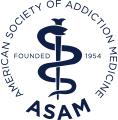Understanding Opioid Addiction
Learn About Opioid Abuse & Addiction
The category of opioids contains a variety of substances, including heroin, morphine, and opium as well as prescription painkillers such as morphine, codeine, Vicodin, OxyContin, and fentanyl. Each of these substances can depress the central nervous system so that an individual can experience relief from pain while also obtaining feelings of relaxation and pleasure. Because of these effects, opioid-based painkillers are prescribed to treat individuals who are experiencing moderate to severe physical pain. However, while these substances can be very helpful, they can also be tremendously addictive and can prompt users to fall into dangerous patterns of substance abuse. In addition, the feelings that result from the abuse of opioids can cause some people to start taking these substances for illicit purposes. Doing so can cause addiction to develop. When individuals start abusing heroin, prescription painkillers, or other opioids in a way that negatively impacts their ability to function regularly on a day-to-day basis, or in a way that leads to serious upset within themselves, they have likely become addicted, or developed opioid use disorder. Opioid abuse can cause significant damage to an individual’s life, and people who have developed opioid use disorder often find that they are not capable of overcoming the compulsion to abuse opioids without effective professional help.
Statistics
Statistics of Opioid Abuse
According to the National Drug Institute on Drug Abuse (NIDA), approximately 26 to 36 million people across the world abuse opioids. Within the United States, more than 2 million people battle substance use disorders related to opioid-based prescription medications. The American Psychiatric Association (APA) estimates that, the 12-month prevalence of opioid use disorders is about 0.37 percent of the adult population.
Causes & Risk Factors
Causes & Risk Factors of Opioid Abuse
The following are among the causes and risk factors that can make individuals more likely to develop opioid use disorder:
Genetic: The APA states that genetic factors play a major role in increasing an individual’s likelihood of battling with opioid use disorder. When a family history of opioid use disorder exists, individuals are much more likely to abuse opioids than those who do not share this same family background. In addition, certain hereditary personality traits and temperamental factors can add to this vulnerability.
Environmental: Having easy access to opioids, associating with individuals who abuse opioids, and being prescribed opioid-based prescription medications are among the environmental factors that can increase the likelihood that a person will abuse or become addicted to opioids.
Risk Factors:
- Suffering from a medical condition that warrants receiving a prescription for opioid painkillers
- Having easy access to opioid substances
- Possessing an impulsive temperament or a novelty-seeking personality
- Family or personal history of other types of substance abuse and addiction
- Family history of opioid abuse and addiction
Signs & Symptoms
Signs & Symptoms of Opioid Abuse
The signs and symptoms related to opioid abuse will be dependent on the type of opioid that is being abused, and will vary from individual to individual. The following are among the many symptoms and signs that an individual who is abusing opioids might exhibit:
Behavioral symptoms:
- Visiting multiple doctors in order to receive multiple painkiller prescriptions
- Slurred speech
- Demonstrating a decline in performance at work or school
- No longer fulfilling obligations at home
- Using opioids in situations that are hazardous, such as driving while impaired
- Withdrawing from family and friends
- No longer partaking in activities that were once enjoyed or deemed important
- Compulsive, prolonger use of opioids
- Engaging in drug-related crimes
Physical symptoms:
- Psychomotor agitation
- Psychomotor retardation
- Pupillary constriction
- Drowsiness
- Insomnia
Cognitive symptoms:
- Memory impairment
- Impaired judgment
- Suicidal ideation
- Cravings for continued opioid use
- Attention and concentration difficulties
Psychosocial symptoms:
- No longer finding interest in things that one was once interested in
- Euphoria followed by apathy
- Depression
Effects
Effects of Opioid Abuse
Opioid abuse can cause individuals to go through a variety of upsetting effects, including the following:
- Suffering from anoxia, or a deficiency in the levels of oxygen that reach the tissues in the body
- Heightened risk for suicide attempts and completed suicides
- Legal problems due to engaging in criminal behaviors
- Financial instability
- Homelessness
- Academic or occupational failure
- Dry mouth and nose
- Slowing of gastrointestinal activity/constipation
- Impaired visual acuity
- Track marks or sclerosed veins in those who inject opioids
- Relationship disturbances/marital strife/family discord
- Increased risk for contracting infections like HIV/AIDS or hepatitis C
Co-Occurring Disorders
Opioid Abuse & Co-Occurring Disorders
Individuals who battle with an opioid addiction often display symptoms or other mental health conditions, too. Some of the many co-occurring disorders that can occur alongside opioid use disorder can include:
- Alcohol use disorder
- Persistent depressive disorder
- Posttraumatic stress disorder (PTSD)
- Major depressive disorder
- Other substance use disorders
- Stimulant use disorder
Effects of Withdrawal & Overdose
Effects of Withdrawal & Overdose From Opioid
When individuals have participated in a long-term pattern of opioid abuse but then stop their abuse suddenly, they will likely go through withdrawal as their bodies readjust to the absence of the opioid(s). The many effects of withdrawal can include the following:
- Excessive yawning
- Uncontrollable flowing of tears
- Nausea and vomiting
- Pupil dilation
- Sweating
- Muscle aches
- Diarrhea
- Fever
- Dysphoric mood (feeling in a constant state of unease)
- Insomnia
Effects of opioid overdose: When opioids are taken to an extent where the body of the user is no longer able to process the substance, he or she is at risk for overdose. When opioids are continually abused, individuals develop a tolerance to them, meaning that they must keep taking larger amounts of the opioid(s) to achieve the same effects. As individuals continue to increase the amount of opioids they consume, they become more likely to overdose. The following signs may indicate that an individual has experienced an opioid overdose:
- Seizures
- Sudden sleepiness
- Cold, clammy skin
- Headache
- Extreme confusion
- Significantly slurred speech
- Severe dizziness
- Shallow or labored breathing







